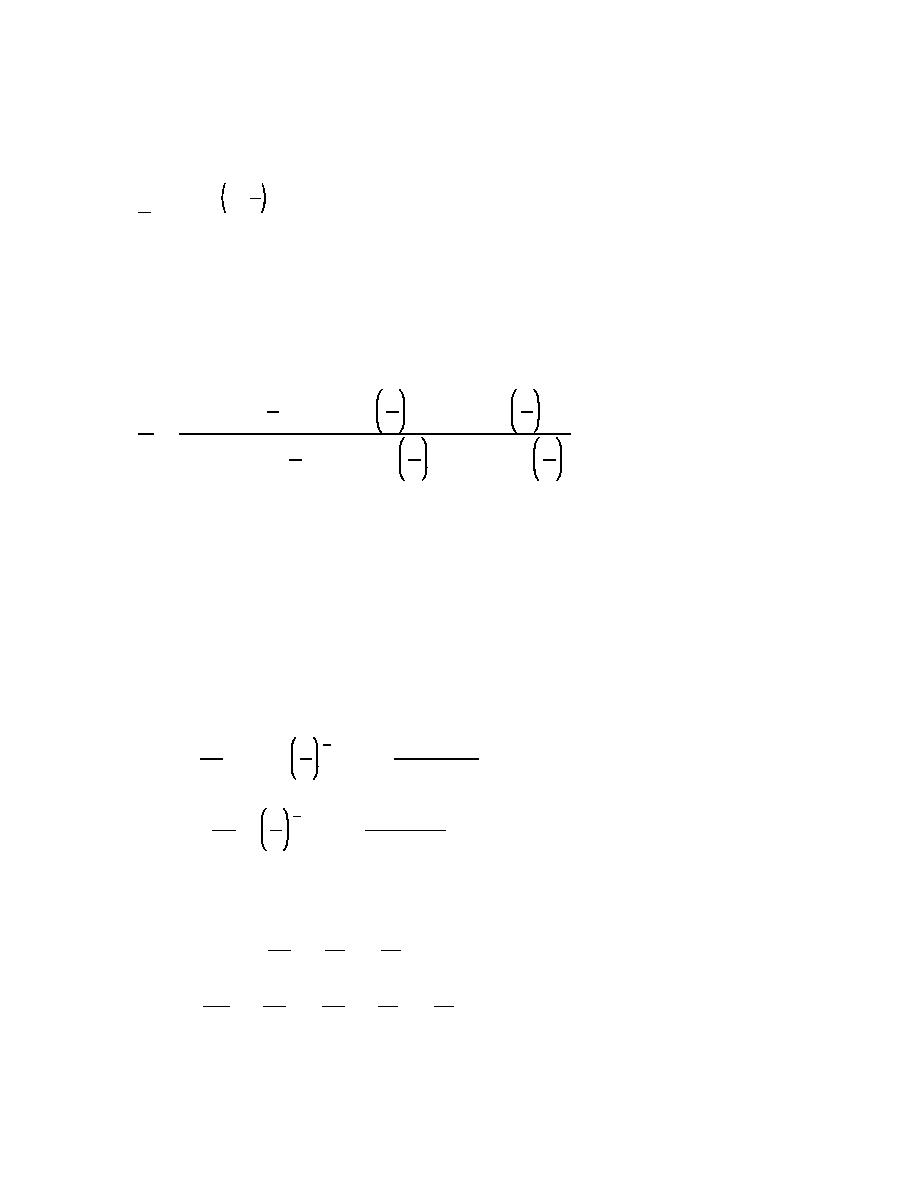
EM 1110-2-1100 (Part II)
30 Apr 02
consistently and better than results from other theories for a wide range of wave height, wave period, and
water depth. Based on these comparisons, Fenton and McKee (1990) define the regions of validity of Stokes
and cnoidal wave theory as
H
&1.87
L
d
' 21.5 e
(II-1-104)
d
(n) The cnoidal theory should be used for wavelengths longer than those defined in this equation. For
shorter waves, Stokes' theory is applicable. Fenton's theory can be used over the entire range, including
obtaining realistic solutions for waves near breaking.
(o) In water of finite depth, the greatest (unbroken) wave that could prevail as a function of both
wavelength and depth is determined by Fenton and McKee (1990) as
2
3
L
L
L
0.141063 % 0.0095721
% 0.0077829
H
d
d
d
a
(II-1-105)
'
d
2
3
L
L
L
1.0 % 0.078834
% 0.0093407
% 0.0317567
d
d
d
(p) The leading term in the numerator of this equation is the familiar steepness limit for short waves in
deep water. For large values of L/d (i.e., shallow-water waves), the ratio of cubic terms in the above equation
approaches the familiar 0.8 value, a limit for depth-induced breaking of the solitary waves. Therefore, the
above equation may also be used as a guide to delineate unrealistic waves in a given water depth.
(q) The formulas for wave kinematics, dynamics, and wave integral properties for Fenton's theory have
been derived and summarized (Sobey et al.1987; Klopman 1990). Only the engineering quantities of interest
including water particle velocities, accelerations, pressure, and water surface elevation defined relative to a
Eulerian reference frame are provided here.
(r)
The horizontal and vertical components of the fluid particle velocity are
1
j jBj
N
MΨ
g
cosh jk(z%d)
2
' &u %
cos jkx
u(x,z) '
(II-1-106)
Mz
k
cosh jkd
j'1
1
j jBj
N
MΨ
g
sinh jk(z%d)
2
w(x,z) ' &
(II-1-107)
sin jkx
'
Mx
k
cosh jkd
j'1
(s) Fluid particle accelerations in the horizontal and vertical directions are found by differentiating the
velocities and using the continuity equation. These component accelerations are
Mu
Mu
Du
'u
%w
ax (x,z) '
Mx
Mz
Dt
(II-1-108)
Mw
Mw
Mu
Mu
Dw
'u
%w
'u
&w
az(x,z) '
Mx
Mz
Mz
Mx
Dt
where
Water Wave Mechanics
II-1-53


 Previous Page
Previous Page
